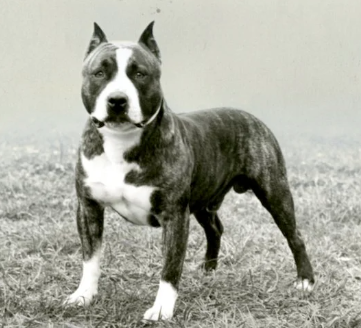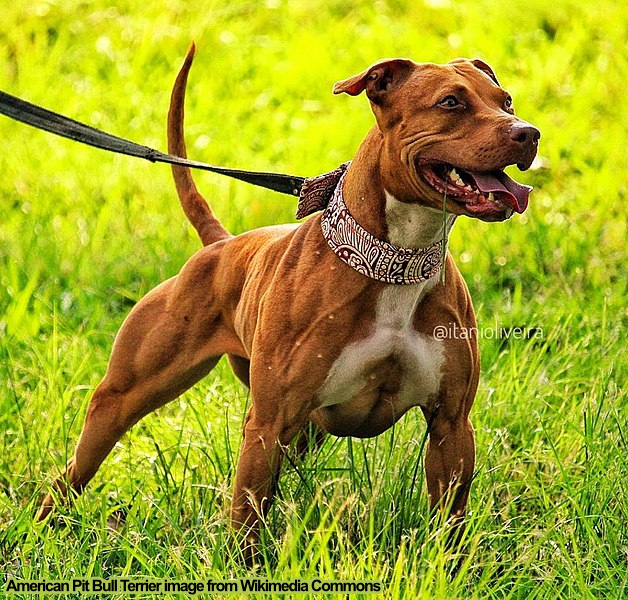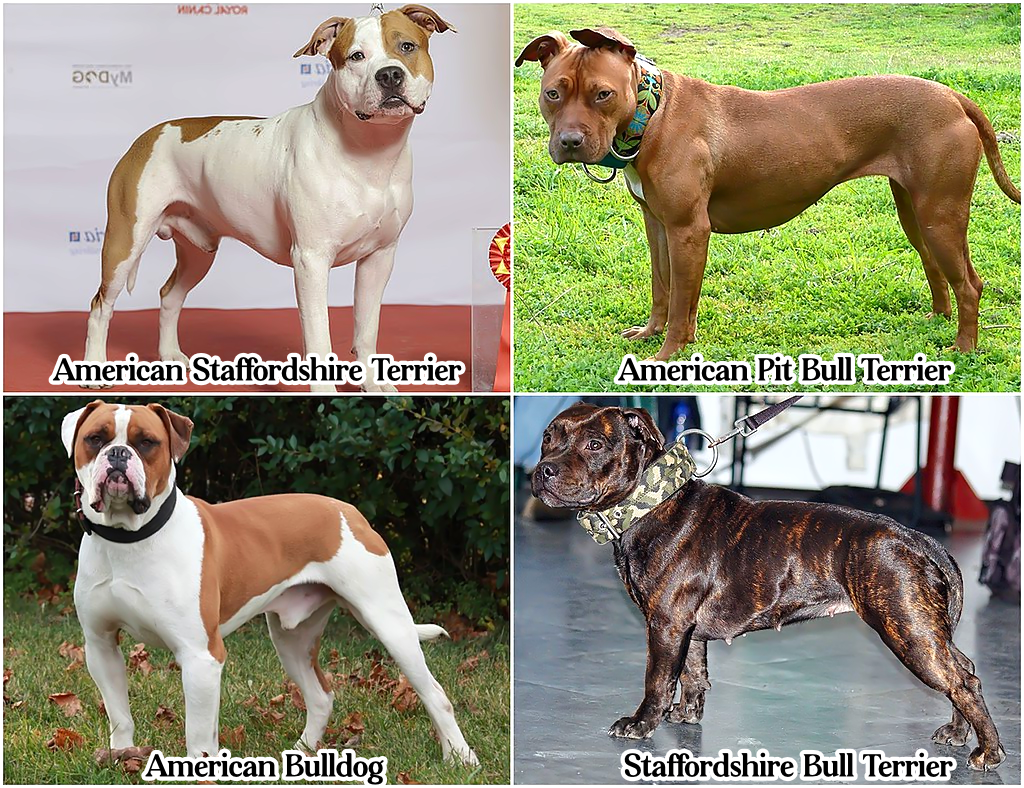History of the Breed
History of the American Staffordshire Terrier
Despite its name, the American Staffordshire Terrier was first bred in the nineteenth century in Birmingham, West Midlands, rather than in the English
county of Staffordshire where it was then later bred. The early ancestors of this breed came from England, where until the first part of the 19th century,
the Bulldog was bred in England. Bulldogs pictured as late as 1870 resemble contemporary American Staffordshire Terriers to a greater degree than present-day bulldogs.
Some writers contend it was the White English Terrier, Fox Terrier, or the Black and Tan Terrier that was crossed with the Bulldog to develop the Staffordshire Terrier;
all three breeds shared many traits, the greatest differences being in color, and spirit.
The cross of Bulldog and Terrier was called by several names, including Bull-and-Terrier
Dog, Pit Bull, or Half and Half. Later, it assumed the name of Staffordshire Bull Terrier in England. These dogs began to find their way into America as early as 1870.

Pictured: CH Rip Rick Irish Mike, Amstaff born circa 1958.
Though the popularity of the pit bull type grew in America, the American Kennel Club did not condone dog fighting and did not want to be associated with
dog fighting in any way, so the pit bull was refused recognition as a pure breed by the AKC. In 1935, Britain finally recognized the Staffordshire Bull Terrier
as a pure breed, which got AKC to reconsider recognition of the pit bull type. AKC decided to recognize a "branch" of the pit bull type in America under a
different name, Staffordshire Terrier, with the caveat that they would not be used for, bred for, or associated with dog fighting.
In 1936, Amstaffs were accepted for registration in the American Kennel Club (AKC) Stud Book as Staffordshire Terriers. When the AKC recognized the
smaller Staffordshire Bull Terrier in 1972, the AKC added "American" to the front of the breed name "Staffordshire Terrier" to differentiate the two as separate breeds.
The breed's popularity began to decline in the United States following World War II. In 2023, the American Kennel Club ranked the American Staffordshire Terrier as the 87th most popular pure breed in the United States.
Amstaffs are companion-bred medium-sized athletic bull-and-terrier dogs which can have temperament throwbacks to historic dogs such as stubbornness,
pickiness about other dogs or same-sex aggression, naturally higher prey/hunting drive and a strong desire to chase or dig. Not all dogs have these traits, but all lines/families of
Amstaffs throughout the world are varied in their levels of throwback temperament traits.
While some Amstaffs may not get along with other dogs (either of the same sex or just other dogs in general), under no circumstances should the Amstaff
be aggressive toward humans. "Human aggression" is NOT typical of the Amstaff breed and is unacceptable.
Amstaff vs APBT Registration
The breeding of APBT or pit bull/pitbull is fairly unregulated outside of the ABDA and UKC, and there is a wide range of appearances under the "pitbull" name. Many feel that "pitbull" is also an umbrella term which includes a lot of dogs or mixes that aren't even pit bull mixes.
Pictured: Stacked view of female Amstaff.
As stated previously, the American Kennel Club recognizes only the American Staffordshire Terrier but not the American Pit Bull Terrier and considers these two distinct and separate breeds. It is the same for the Canadian Kennel Club.
The United Kennel Club (UKC) recognizes APBT (American Pit Bull Terrier) as a breed but not Am Staff. The UKC mainly focuses on the working quality or use of breeds in utility. The American Dog Breeders Association (ABDA) focuses on the registration of the APBT, the dogs of which are even further removed in type from the American Staffordshire Terrier.

Pictured: Frontal view of female APBT.
Some of the generalized differences between Amstaff and APBT include:
APBT: Comes in all colors except merle. Liver or chocolate is common.
Amstaff: Comes in black, blue, red, fawn, brindle, and all these patched on white or Irish markings.
APBT: Zesty, fiery mind; intense. Very high to extremely high prey/hunting drive is desired in the breed.
Amstaff: Though intensity can vary, prized Amstaffs are very stable and manageable, specifically after some exercise.
APBT: In America, recognized by the UKC, not AKC. In Canada, not recognized by the CKC.
Amstaff: In America, recognized by the AKC, not UKC. In Canada, recognized by the CKC.
APBT and Amstaff sizes are very similar, but Amstaffs generally are a bit heavier overall, especially in bone size.
APBT are often quite conditioned (very muscular and lean) because they are so high energy. However, condition is not a good way to decipher Amstaff from APBT; any kind of dog on a feeding and exercise regimen can become very muscular and lean, just like people!

Both Amstaff and APBT are to be friendly toward strangers. The unregulated breeding of pitbull types without a breed standard; without networking, community, and accountability; without health testing or temperament testing; and without the desire to better each generation in every way (health, temperament, type); combined with raising, socializing, and training the dogs insufficiently, has been extremely impactful in the current condition of the "pit bull" in North America and the world.
The vast majority of dogs who end up in shelters or euthanized due to temperament problems and overpopulation were bred by those who breed their unregulated, not health tested, not temperament or quality tested, unregistered pet dogs without caring to adhere to the breed standard.
Kennel clubs like the UKC and AKC, though they may have slightly differing views of the pit bull types, overall work toward the same goal: to encourage the production of high quality pit bull types (APBT and Amstaff, respectively) who are correct in physical type AND temperament.
Kennel clubs and breed associations provide community/networking and regulating factors for breeders: a code of ethics and a standard of perfection.
Written by R.Wishart
